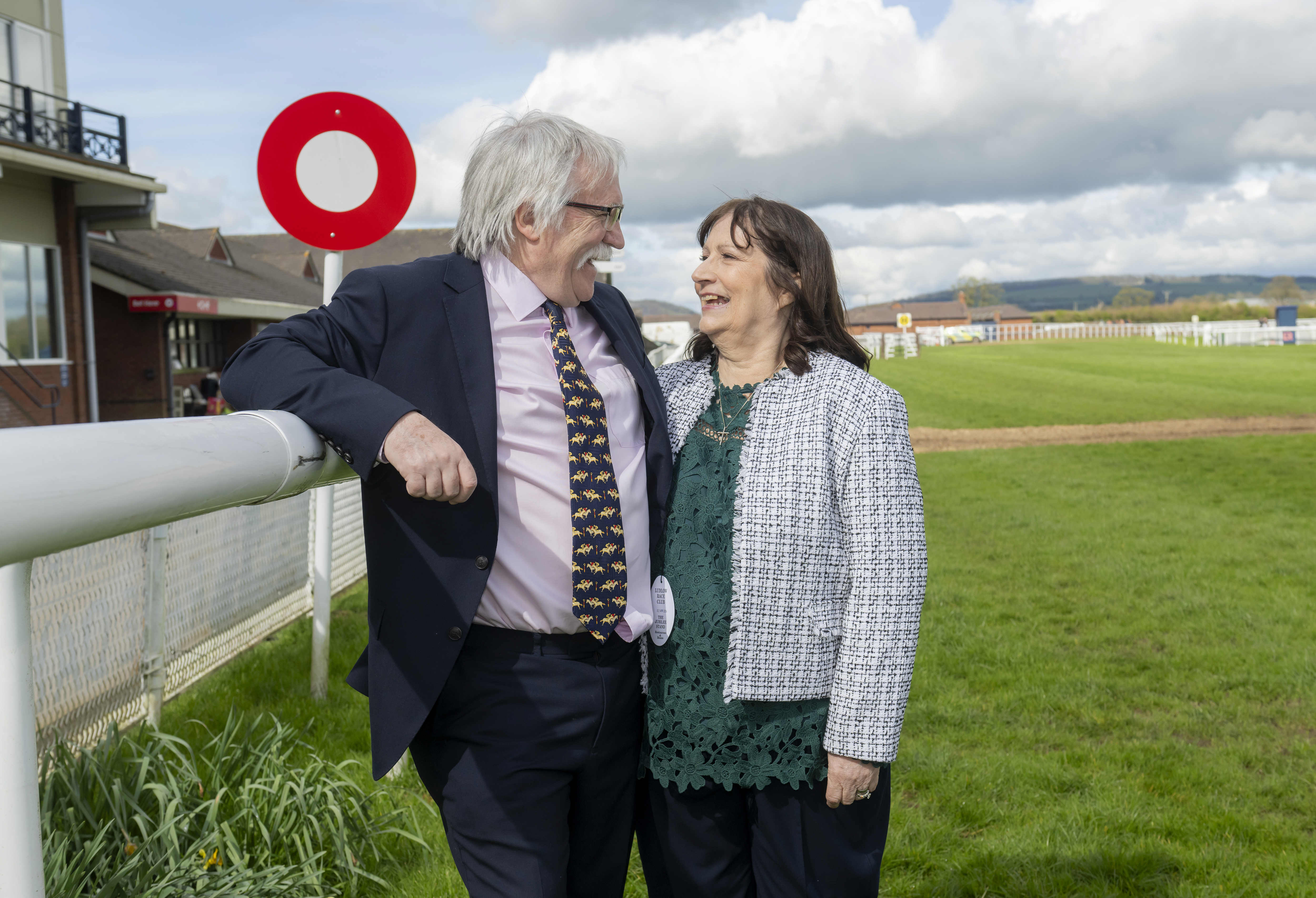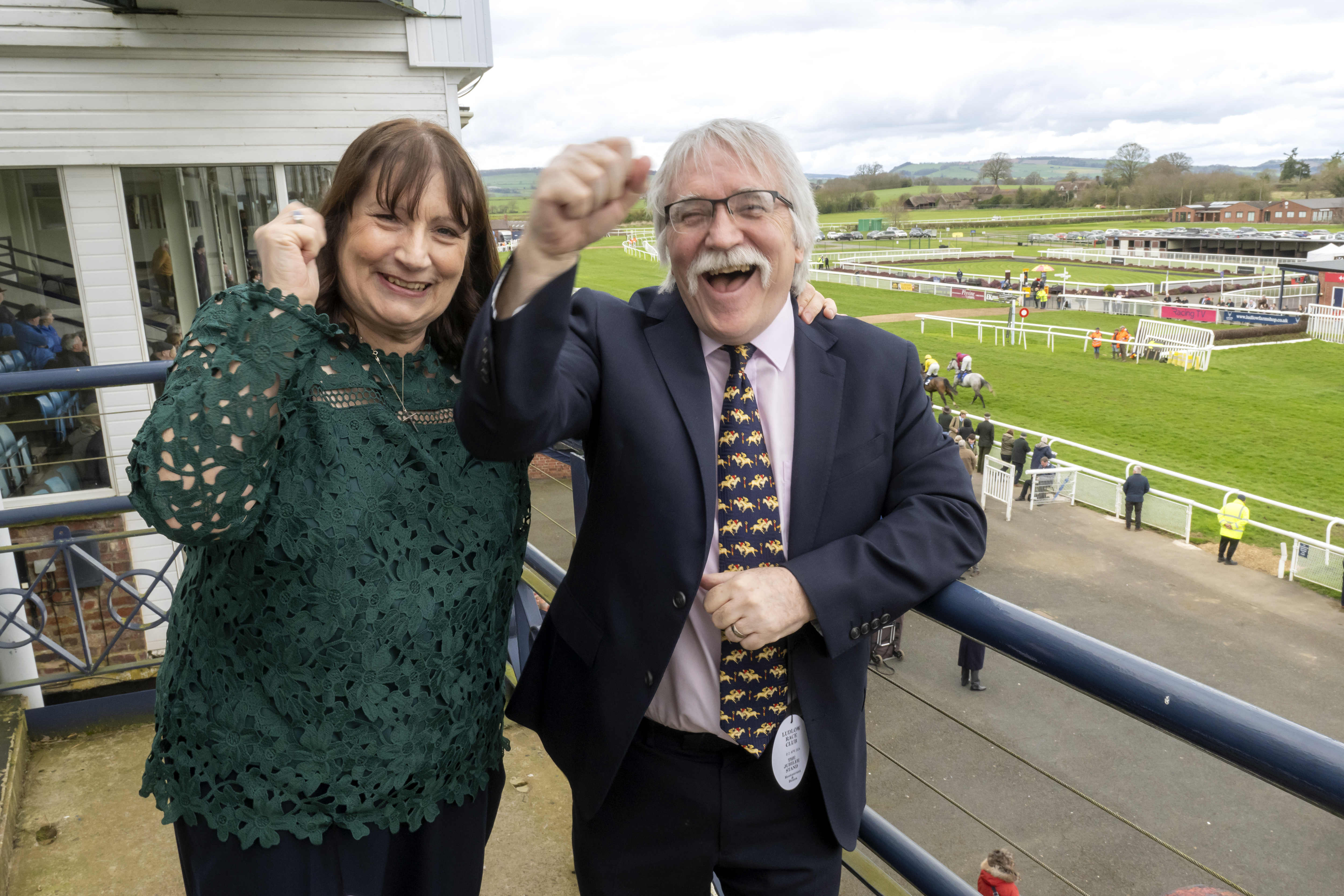Couple's Expensive Adventure
A couple who won a £2.7 million lottery prize decided to splurge on a racehorse, but it didn't quite go as planned. Racing enthusiasts Elaine and Derek Thompson set out to visit all 59 racecourses across the UK after their big win.
From Sick Note to Success
The couple invested in a horse that unfortunately earned the nickname "Sick Note" due to its pre-race coughing fits and lack of wins. Undeterred, they later purchased Richmond Lady, which did manage to secure a victory at Exeter racecourse.
Completing the Challenge
After 29 years of racecourse visits, Elaine and Derek finally completed their goal by attending the Ludlow Racecourse in Shropshire, the last on their list. The main event of the day was 'The Elaine and Derek Thompson Celebration Chase', in honor of the couple.
Special Moment at Ludlow
Elaine and Derek sponsored a race at Ludlow and were able to present prizes to the winning jockey and best turned out horse. They expressed their love for the intimate atmosphere at Ludlow and their gratitude for the warm welcome they received.

Celebrating a Milestone
The assistant manager at Ludlow Racecourse, Diane Thomas, shared their excitement at hosting the couple's 59th racecourse visit, making it a memorable and special day for all involved.
Frequently Asked Questions
Can you ride a racehorse in any place?
Although the horse can train on various tracks initially, specific racing training requires facilities which simulate the conditions that the horse is likely to face in competition. This can include tracks of the right size with the exact same type and surface that the horse will race upon. It is important to use the right track in order to condition the horse correctly and familiarize them with the particular racing environment.
What is the initial step to training a racing horse?
In the initial training phase, the racehorse must undergo a crucial stage called “breaking,” during which the horse is accustomed to the saddle, the bridle and the weight carried by the rider. During these sessions, patience is key to ensuring the horse feels comfortable around humans and with the equipment they will use throughout their racing career.
When can a horse be expected to start racing training?
Horses can start their basic training as yearlings, but most begin their more rigorous race training and conditioning when they are around two years old. The horses’ bodies will be mature enough to withstand the strain of racing, while still young and adaptable. Depending on the temperament and development of the horse, exact timing may differ.
Is it necessary for a racehorse to have a specific type of shoe?
Racehorses wear special shoes called racing plates, which are lighter and thinner than regular horseshoes. These plates minimize weight while providing the necessary traction for the racetrack. A racehorse farrier will select and fit the shoes according to each horse’s foot conformation, and the surface on which they will be racing.
What is a trainer’s role in training a racing horse?
Jockeys have a crucial role to play in the training of racehorses. They not only ride the horses during workouts, providing feedback on the horse’s performance, but also help in educating the horse about racing tactics, such as pacing, positioning, and responding to commands. A good jockey becomes attuned to the horse’s strengths and weaknesses, which is indispensable for race preparation.
How important is the pedigree of a racehorse for success?
Although pedigree may be a sign of potential, it does not determine a racehorse’s success. Although a horse’s lineage can indicate an inherited aptitude for endurance or speed, other factors, such as health and temperament, are also important. Good training can maximize a horse’s natural abilities and even allow it to outperform others with more impressive pedigrees.
Statistics
- The Injury Database from The Jockey Club reports that synthetic racing surfaces have a lower horse fatality rate than dirt tracks, with a statistically significant difference of 1.2 fatalities per thousand starts on synthetics compared to 2.0 on dirt tracks.
- Racehorse mortality rates during racing have been observed to be between 1.5 to 2 deaths per thousand starts, depending on the racing jurisdiction.
- The average racehorse reaches its peak physical ability between the ages of four to five, with some variation based on the breed and individual development.
- Approximately 70% of a racehorse’s diet consists of forage, with the remainder made up of grains and supplements to meet their high-calorie needs.
- Around 80% of thoroughbred racehorses begin their racing careers by the age of two, according to industry estimates.
- Studies suggest that proper early training can reduce the risk of musculoskeletal injuries in racehorses by up to 50%.
External Links
horseracing.com
equibase.com
grayson-jockeyclub.org
racingpost.com
thoroughbredracing.com
bloodhorse.com
How To
How to Reduce injury risks during racehorse training
To minimize the risk of injury to your horse, you should implement a progressive program that corresponds with his fitness level. Combine high-intensity exercises with sufficient recovery time to avoid overtraining. Maintain the training and racing grounds to avoid accidents. Use the right tack for your horse and check regularly for wear. Cross-train using swimming or low-impact sports to balance joint and muscle health.

